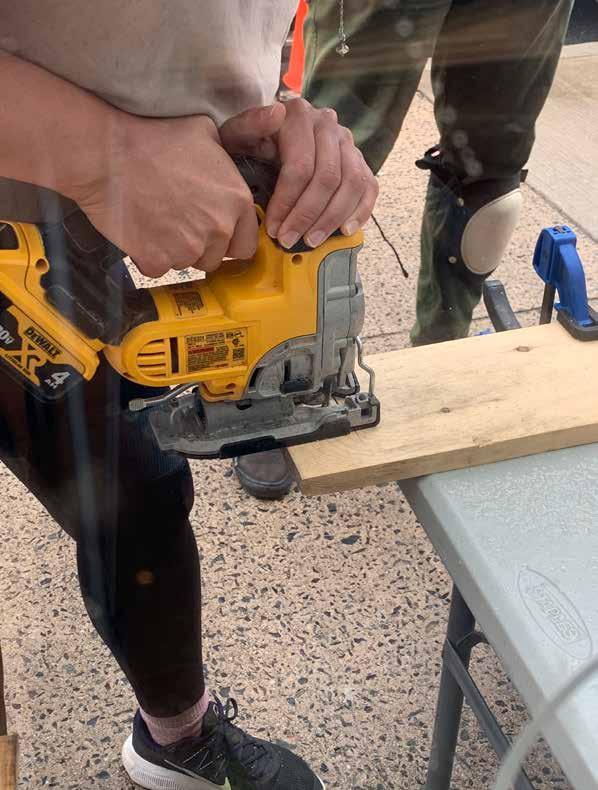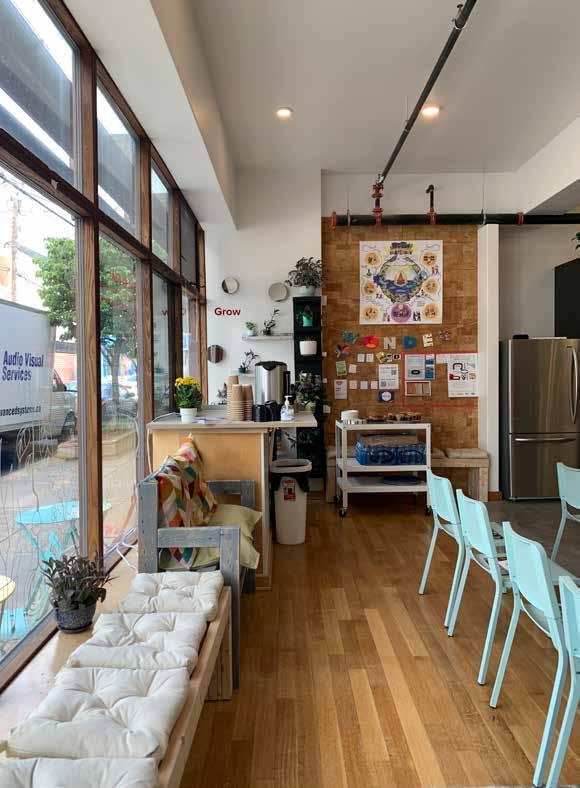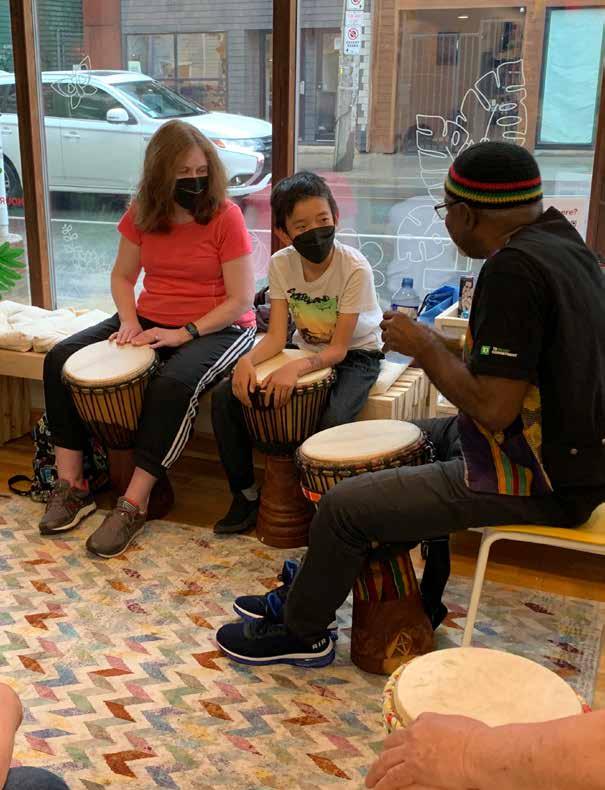
5 minute read
Neighbourhood Shop
Shop 1: Gottingen Street, North End Halifax
The shop on Gottingen St. Is 2270 sqaure meters, located on a busy main street in Halifax North.
This specific location holds significance in several different ways. It is across the street from where the Mi’kmaw Native Friendship Centre ran its core operations for over 30 years, becoming a safe and welcoming space in the neighbouhood for Indigenous community members to access culturally relevant programs and services. This site is also just a few blocks away from where the new Wije’winen Centre will be built - an essential landmark that will become a central hub for cultural collaboration and an important symbol of Indigenous identity and belonging in the urban context.
Main open area: includes kitchen, planting area, sewing area, “mini-makers” area, tool wall, creation zone, relaxed seating area, and open space for modular tables and seating.
Rooms: Resident Office and Workspace, Team Office, Storage Room; Quiet Room. The shop has large windows facing onto Gottingen Street, which allow people to see the activity inside. There are invitations written on the windows to indicate that people walking by are welcome and encouraged to come in.
-Neighbourhood Project Designer
The Gottingen St. Shop was secured in March 2022 and opened its doors to local residents in June 2022. The creation of the shop posed the first major design challenge for the team and provided in-depth experiential learning around infrastructure that is purpose-built for inclusive participation. While each member of the platform team contributed to the design and outfit of the space, the overall look and feel of it was deeply informed

From the very beginning, it was apparent that residents felt
the uniqueness and positive energy that filled the Gottingen Street Neighbourhood Shop. On multiple occasions, our team noted the reaction of residents as they walked through the entrance. Many gasped in wonder, put their hand over their heart and stood, if only for a few seconds, in awe.
Kitchen
Planting
Seating Washroom Resident Workspace Team Office Storage Room
Tool Wall
Quiet Room “mini-makers” area
Sewing and Crafting
by the shop spaces in Barking & Dagenham. While residents did not take part in the design and set-up of the space, they continue to inform of its use and development as the shop becomes known as a family gathering and co-creation space in the neighbourhood.
Since launching the shop, the team has made several key observations that are helping to inform needed adaptations as we learn more about how residents interpret and interact with the space and the role that this plays building participation culture across the neighbourhood.
–Resident


Attracting more residents through new and varied invitations.
The shop itself has proven to be a powerful tool for communicating elements of our intent and vision, and attracting new people to come into the Shop takes on-going experimentation. Furthermore, the fact that we are new and unfamiliar requires an element of trust-building, particularly for residents who have lived in the North End for a long time and may or may not be hesitant in the face of new developments.
Welcoming Children as Mini-Makers.
Children and families are welcome and encouraged to use the shop in all its forms, and a central aim of this work is to invite children to become “mini-makers” in their own neighbourhoods. In some cases, this can also turn into a relaxed space for care-givers to let their guard down and rely on team members for ensuring safe practices and stimulating interaction with the space.
Fostering a Sense of Care and Ownership in Public Space.
Set-up of the Shop is designed to invite residents in and as quickly as possible and foster a sense of care and ownership that can easily lend itself to initiating and taking part in a range of co-creation activities. The careful balance, as discovered by the neighbourhood team, is to avoid the feeling of it becoming a neighbourhood “drop-in” space—where residents feel at ease to relax and gather, but where participation and co-creation can easily fall to the wayside.
Maintaining Safe Spaces Where Everyone Can Feel Included.
At times, some residents have needed support outside of the inscribed roles and responsibilities of the project team. While it is important to support residents as they walk through the door, it is most important to ensure the safety of all in the space, including team members. The team gathers each week to discuss issues as they arise, giving opportunites to discern what the boundaries are between being considerate of people’s situations, and when this becomes unsafe or works to exclude others.


–Resident

Insights and Areas for Growth:
• Experimenting with new and varied ways to extend invitations onto the street and out into the neighbourhood.
• Enhancing the natural benefit of large open windows by encouraging participatory activities to take place in the front area of the shop, where passersby can view in from the street.
• Identifying trusted leaders and champions in the neighbourhood who can help to promote the vision, build trust, and attract or accompany more residents into the space.
• Deeping relationships with local organizations and businesses to identify specific opportunities for expanding inclusivity across spaces and projects that might currently cater to targeted needs or audiences.
• Finding respectful ways to communicate and model how children must be accompanied and supported as mini-makers within the
Neighbourhood shop(s) and across projects.









